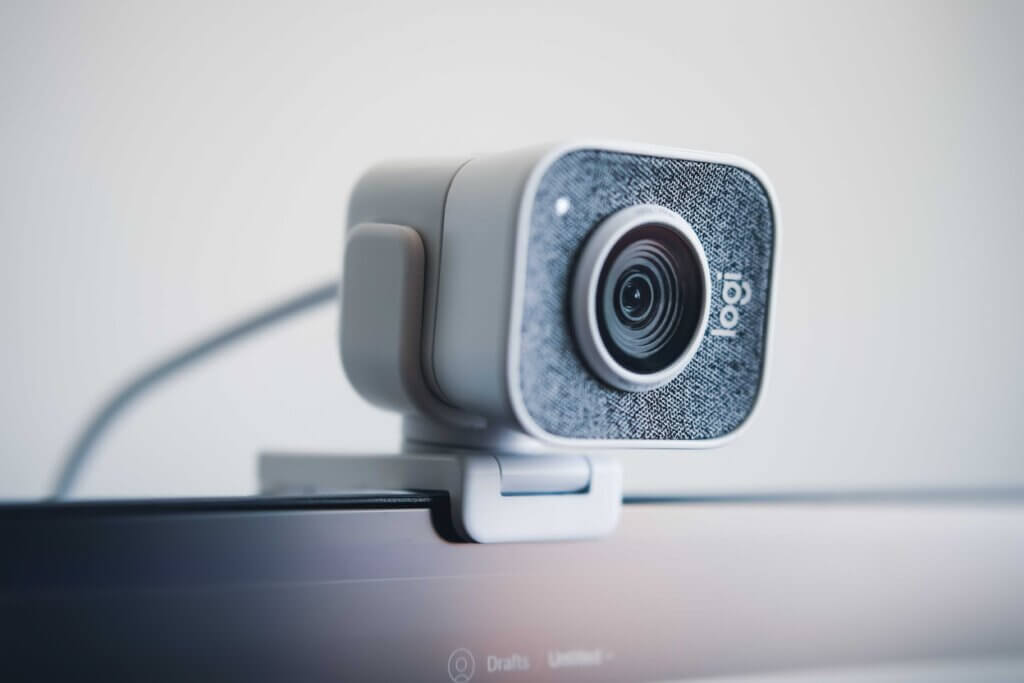Live video chat and streaming has become a common way for people to connect, communicate and share their ideas and experiences online.
Most smartphones, tablets or laptops now have a camera, with people now using these as their primary way to take photos and videos. During the Covid-19 pandemic, the use of instant video chat services enabling either one-on-one conversations or group chats became commonplace. A wider number of social media apps and services now offer this too. It’s never been easier to stay in touch with family, friends and school or work online.
Many social networking sites now offer the option to live-stream. This is a little bit like hosting your own live TV show – users can broadcast live video to all their friends and followers, or if they have a public account, anyone who tunes in.
For specific advice for young people on livestreaming, check out the Livestreaming hot topic.
How can I support my child if they video chat or use a webcam?
There are a huge number of positive uses and potential for using video chat services and streaming services as tools for communication.
When first accessing or installing a new app or account, a number of sites, apps and services may wish to access your webcam. The advice below can be used to support young people in managing the risks associated with webcams and video chatting.
Top Tips:
Encourage your child to always consider who they are chatting to and what they may be sharing with them. What you share on camera (including things in the background) can give away personal information. Remind your child to be aware that webcam or live video footage can also be recorded by someone and then potentially shared and uploaded anywhere online.
On some services young people may receive chat requests or invites from people they don’t know. Encourage them to think carefully about who they choose to chat to and why others might want to video chat with them. Videos can be made to appear live, but can in fact be a recording. Discuss with your child the risk that the person they see on camera may not be the person they are actually speaking to. If a site or service has privacy settings, encourage your child to always make use of them to control who can contact them.
Some video chat services allow users to chat to and see strangers online and may put them at risk of seeing pornographic or violent content or sexual behaviour on camera. This content should always be reported to the website/service and be blocked via blocking tools if available.
People may use video chat to convince a young person to take part in a dangerous dare, to appear naked on camera or to perform sexually suggestive acts. This can then be recorded by the watcher and potentially be used to threaten or blackmail the person in the video. Make sure your child knows that if someone ever asks them to do or say anything on camera that makes them feel uncomfortable then they can say no, end the chat and tell you, or another adult they trust.
Remind them that it is never too late to tell someone.
They can also block or report a user to the website/service if the harassment continues.
If a young person has been the subject of inappropriate sexual contact or approach by another person via webcam or other forms of online communication then it is vital to tell a trusted adult and to report it to the police via the Child Exploitation and Online Protection Centre.
Make conversations about your child’s online life a regular part of your family discussions, so they know they can talk to you if anything ever upsets them or worries them online. View ‘Let’s talk about life online‘ for more ideas.
Technical Advice:
Webcams can be affected by viruses so encourage your child to be wary of emails and messages on social networks from strangers that invite them to click on a link or open an attachment. These may actually contain malicious programs which allow the stranger to control a webcam or device remotely.
Make use of antivirus and firewall protection software, and remind your child to ensure that it is kept up to date on all their devices that have cameras or use webcams.
Webcams connected to computers should not be located in bedrooms or more private areas of the house. Although it is rare, there have been cases of webcams being hacked by programs/users to take pictures or video without the owner’s knowledge.
Unplugging the webcam, covering the lens or pointing it at a blank wall when not in use are good steps to take to minimise this risk, as is closing the laptop lid when not in use.
Sites, services and apps may ask for permission to use a webcam. Before accepting, young people should always think carefully about why the service may want to use their camera and who may be able to see the video feed. If in doubt, it is best not to allow the app or site to have access, or to ask an adult for help.
Young people should always make sure they end a video chat when finished and log out of the site or service. This can help prevent anyone from accessing their account or webcam without their knowledge.
